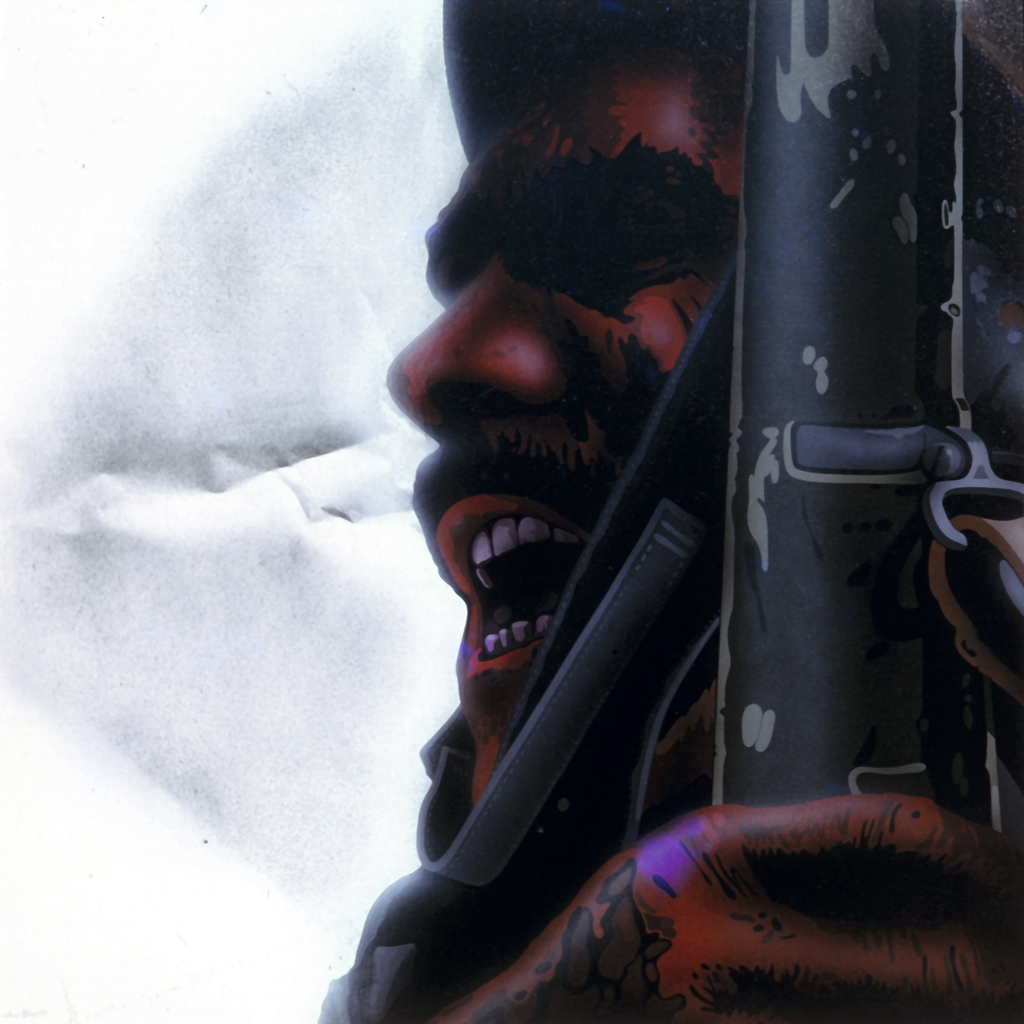Guerrer àrab (Arab warrior)
Throughout his career, the artist has kept a constant, critical gaze on the injustices threatening the world. At the beginning of “The Dollar” and “Today’s Man” series, this is made clear regarding situations arising in various far-off places. In Blasco Carrascosa’s words, “it is the radical allegation against historical and current irrationalities” formalised by a kind of message that is “direct, forceful, and often raw”.
That is why Aguilera Cerni spoke of how Miró’s work fits within Social Realism, which “is only valid as a chronicle of events and criticism of facts if it meets certain criteria of quality and achieves effective communication.” In other words, it is not enough to just cover events overcoming the transient nature of the news, you must raise awareness. One approach might be to link apparently unconnected subjects that for many critics, such as Rodríguez Olivares, are linked: “The chronicle contains certain recognisable facts that should not be considered in isolation: massacres in Chile, genocide in Palestine, war in Vietnam, corruption in America. They are aspects of the all-pervasive US Dollar.”
The Arab-Israeli conflict has shaped the history of the Middle East since the mid-twentieth century. The Yom Kippur War (1973) (stemming from efforts by Egypt and Syria to regain territories occupied six years earlier by Israel, the Sinai Peninsula and the Golan Heights, respectively) was the trigger for the oil crisis that stunted consumption and economic growth in the West.
Antoni Miró pays homage to Arab warriors’ call to arms as a way of expressing his rejection of the World Order established after WWII under the leadership of the USA, and because they seek to recover their own culture after being subjugated by another.
The painting shows a close-up of a Syrian soldier’s head, behind his rifle. The sky before him is evoked by a blueless expanse conveyed by crumpled paper on the canvas. The vertical axis of the image is slightly overshot by this profile portrait, occupying the whole right side and leaving some of it out of the limits. The framing is of the kind one would expect to see in a photo, rather than in a painting.
The slightly greyish-white area at the background of the left half offsets the very dark tones used to represent several elements (the face, the gun, the hand and some straps), stressing the dark complexion and the blacks of the steel and leather. The painter resorts to strongly contrasting flat ink areas to give a volumetric appearance, just like in the mechanical printing media of the time.
The warrior’s gesture (the artist’s choice of ‘warrior’ rather than ‘soldier’ seems to seek legitimisation of those fighting on the Arab side) paradoxically conveys both the protagonist’s resolve and fear.
Santiago Pastor Vila
